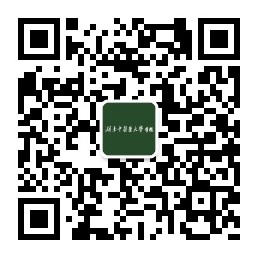| 引用本文: |
杨皓宇, 周心怡, 陈鑫, 戴宏芳, 覃艳.谷胱甘肽响应型姜黄素荧光探针的构建及细胞成像[J].湖南中医药大学学报,2025,45(6):1030-1036[点击复制] |
|
| |
|
|
| 本文已被:浏览 1516次 下载 974次 |
| 谷胱甘肽响应型姜黄素荧光探针的构建及细胞成像 |
| 杨皓宇,周心怡,陈鑫,戴宏芳,覃艳 |
| (湖南中医药大学药学院, 湖南 长沙 410208) |
| 摘要: |
| 目的 制备一种响应谷胱甘肽(GSH)的姜黄素荧光探针,并将其应用于肝癌细胞成像,考察其细胞毒性、线粒体靶向性及诱导活性氧(ROS)产生的能力。方法 以姜黄素为荧光基团,构建GSH 响应的姜黄素荧光探针(CPB),采用液相色谱-质谱联用技术及核磁共振表征其结构,利用紫外光谱分析其对GSH的响应及时间依赖性变化。通过MTT法及ROS检测评估CPB的细胞毒性和ROS生成能力,结合细胞成像和线粒体共定位实验,探讨其靶向性。结果 核磁共振碳谱和液相色谱-质谱结果表明,CPB合成成功。紫外光谱显示,CPB自身的响应信号呈浓度依赖性且CPB对GSH的响应信号具有时间依赖性。MTT实验表明,CPB在20~30 μmol/mL浓度下显著抑制HepG2细胞增殖(P<0.01),40 μmol/mL CPB则抑制BEL7402/DDP细胞增殖(P<0.05),但对AML-12细胞几乎无毒性,表明其具有较低的细胞毒性。ROS检测结果显示,CPB能诱导HepG2和BEL7402/DDP中ROS的产生,且呈浓度依赖性。在细胞成像实验中,相较于Control组,10~30 μmol/L CPB的荧光强度均有所增强(P<0.01),并与商品化线粒体探针的荧光信号基本重叠。结论 本研究设计并合成了一种对GSH响应的CPB,其具有良好的GSH响应灵敏性、低细胞毒性和线粒体靶向性等特点,可作为一种安全可靠的GSH检测探针应用于肿瘤细胞成像。 |
| 关键词: 谷胱甘肽 荧光探针 姜黄素 线粒体 活性氧 细胞成像 |
| DOI:10.3969/j.issn.1674-070X.2025.06.006 |
| 投稿时间:2025-01-13 |
| 基金项目:湖南省自然科学基金项目(2024JJ5296);湖南中医药大学揭榜挂帅项目(22JBZ023)。 |
|
| Construction and cell imaging of GSH-responsive curcumin probe |
| YANG Haoyu, ZHOU Xinyi, CHEN Xin, DAI Hongfang, QIN Yan |
| (School of Pharmacy, Hunan University of Chinese Medicine, Changsha, Hunan 410208, China) |
| Abstract: |
| Objective To synthesize a glutathione (GSH)-responsive curcumin-based fluorescent probe (CPB) and apply it for hepatocellular carcinoma cells imaging, investigating its cytotoxicity, mitochondria-targeting capability, and ability to induce reactive oxygen species (ROS) generation.Methods A GSH-responsive fluorescent probe (CPB) was synthesized using curcumin as a fluorescent moiety, and its structure was characterized by liquid chromatography-mass spectrometry (LC-MS) and nuclear magnetic resonance (NMR). Ultraviolet (UV) spectroscopy was used to analyze its response to GSH and time-dependent changes. The cytotoxicity of CPB was assessed by MTT assay, and its targeting was explored in combination with cell imaging and mitochondrial co-localization experiment.Results The Results of NMR carbon spectra and LC-MS confirmed the successful synthesis of CPB. UV spectra showed that the response signal of CPB itself was concentration-dependent, while that of CPB to GSH was time-dependent. MTT assay showed that CPB of 20-30 μmol/mL significantly inhibited the proliferation of HepG2 cells, and CPB of 40 μmol/mL inhibited the proliferation of BEL7402/DDP cells, while showing almost no toxicity to AML-12 cells, indicating low cytotoxicity. ROS assay showed that CPB induced ROS generation in HepG2 and BEL7402/DDP cells in a concentration-dependent manner. Compared with the control group, the cell imaging experiment demonstrated that the fluorescence intensity of CPB enhanced at concentrations of 10~30 μmol/L and its fluorescence signals largely overlapped with those of commercial mitochondrial probes.Conclusion In this paper, CPB, a GSH-responsive curcumin-based fluorescent probe, was designed and synthesized. It exhibits good GSH response sensitivity, low cytotoxicity, and mitochondrial targeting, which can be applied as a safe and reliable GSH detection probe for tumor cell imaging. |
| Key words: glutathione fluorescent probe curcumin mitochondria reactive oxygen cell imaging |
|

二维码(扫一下试试看!) |
|
|
|
|




